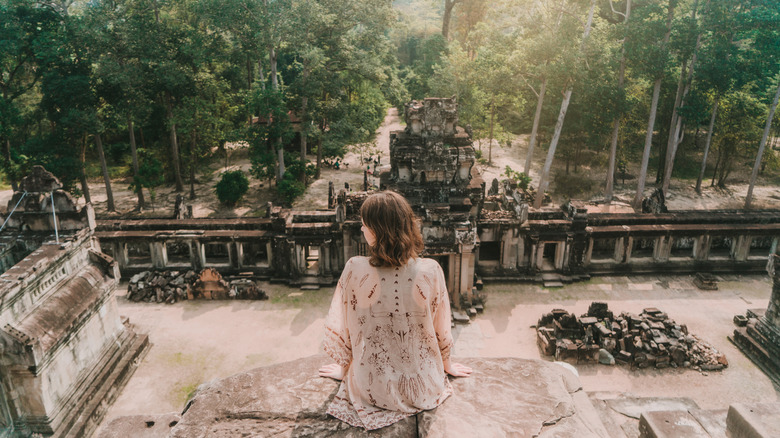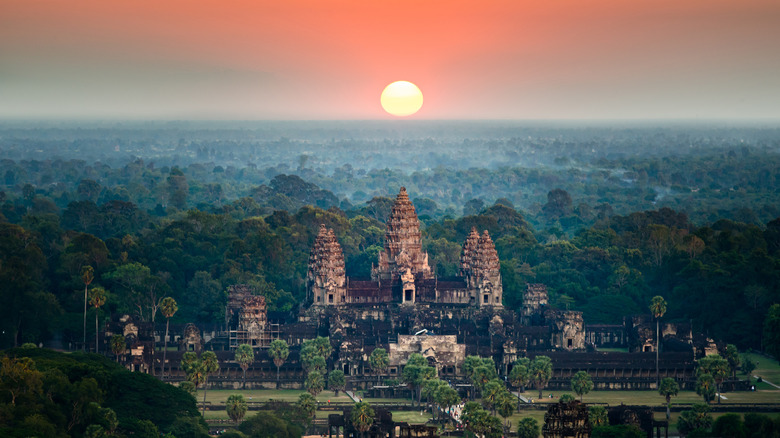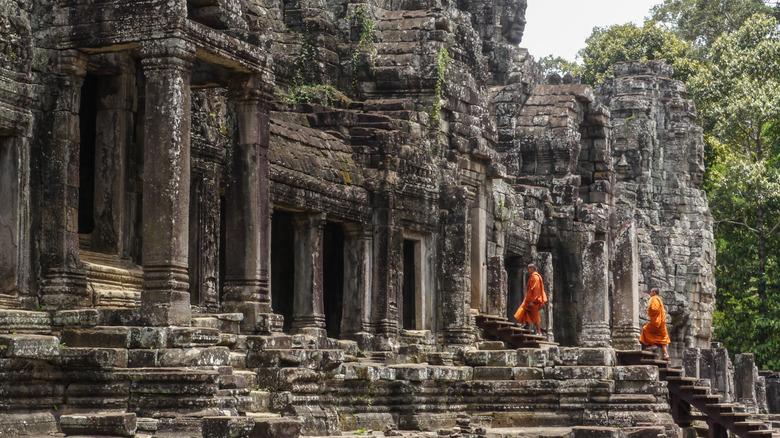Visit The Largest Religious Structure At This Historical Southeast Asia Destination
Nestled amidst the lush jungles of Cambodia, the ancient temple complex of Angkor stands as a testament to the grandeur of a bygone era. As one of the most iconic and important archaeological sites in Southeast Asia, the UNESCO Heritage Site of Angkor is renowned for its historical significance, architectural distinction, and sheer size. At the heart of this sprawling complex lies the magnificent Angkor Wat, the largest religious structure in the world. This awe-inspiring place of worship was constructed in the 12th century by King Suryavarman II as a dedication to the Hindu god Vishnu.
The archaeological site, located in the northwestern part of Cambodia, was once the thriving capital of the Khmer Empire, which ruled over much of Southeast Asia from the ninth to the 15th century. This civilization left behind a legacy of remarkable engineering and artistic achievements. Angkor was a thriving metropolis with an intricate infrastructural system of temples, reservoirs, and canals stretching nearly 1,158 square miles. The empire's rulers built these grand structures to honor Hindu deities and, later, Buddhist ideals.
The city ruins comprise 72 major monuments, including Angkor Thom, Bayon Temple, Ta Prohm — the iconic one featured in "Tomb Raider." The largest of these temples is Angkor Wat, which translates to "Temple City."
The complexity, spirituality, and conservation of Angkor Wat
Angkor Wat's claim as the largest religious structure in the world is well-deserved. The beautiful temple is surrounded by a massive moat and a 2.2-mile-long outer wall and boasts a height of 699 feet, an unthinkable achievement for its time. One of its most remarkable features is the extensive bas-reliefs. These intricate wall carvings depict scenes from Hindu mythology, historical events, and daily life during the Khmer Empire's reign.
Visiting Angkor Wat is a spiritual experience. As you step onto the causeway leading to the temple's central entrance, you will begin a journey into the heart of Cambodia's history and culture. Climbing the steep steps to the upper levels of Angkor Wat offers panoramic views of the surrounding jungle and ancient city. Here, you'll find a sanctuary housing sacred images and local monks in profound states of prayer. This vantage point is an ideal spot to witness the stunning sunrise or sunset, a rightfully popular time to visit.
The preservation of Angkor Wat and the entire Angkor complex is an ongoing challenge. The devastation of the Cambodian Civil War in the '70s has even left some bullet holes in the temples. Over the years, various organizations and the Cambodian government have undertaken extensive restoration efforts to safeguard this invaluable heritage from the forces of nature and overtourism. Visitors are encouraged to play their part by respecting the rules and regulations set by the authorities. Climbing on fragile structures, touching carvings, or littering within the complex is strictly prohibited.
Visiting Angkor and the nearby Siem Reap
The best time to visit is during Cambodia's dry season from November to April. During this period, the weather is pleasant and you can explore the temples without heavy rains. Entrance to Angkor costs $37 for one day, $62 for three days, and $72 for seven-day tickets. It is highly recommended to book a guided tour for at least a full day, or better yet, three days, to learn about and explore the ancient complex. Bonus: you'll often get picked up and dropped off at your hotel!
Siem Reap, the nearest city, serves as the gateway to Angkor Wat and offers a wide range of accommodations, from luxury resorts to budget-friendly hostels. Many of these establishments are designed to provide a comfortable and convenient base for exploring the temples. While in Siem Reap, don't miss the opportunity to taste some Cambodian cuisine. Try traditional dishes like amok (a creamy coconut and fish curry), lok lak (marinated beef with a tangy dipping sauce), and Khmer barbecue.
When Angkor Wat was discovered by the French explorer Henri Mouhot in the 1840s, he described it as something "grander than anything left to us by Greece or Rome." It comes as no surprise that over 2 million people visit every year. The largest religious structure in the world will transport you to a time when gods and kings once walked, leaving an everlasting mark on Southeast Asia's historical landscape.


